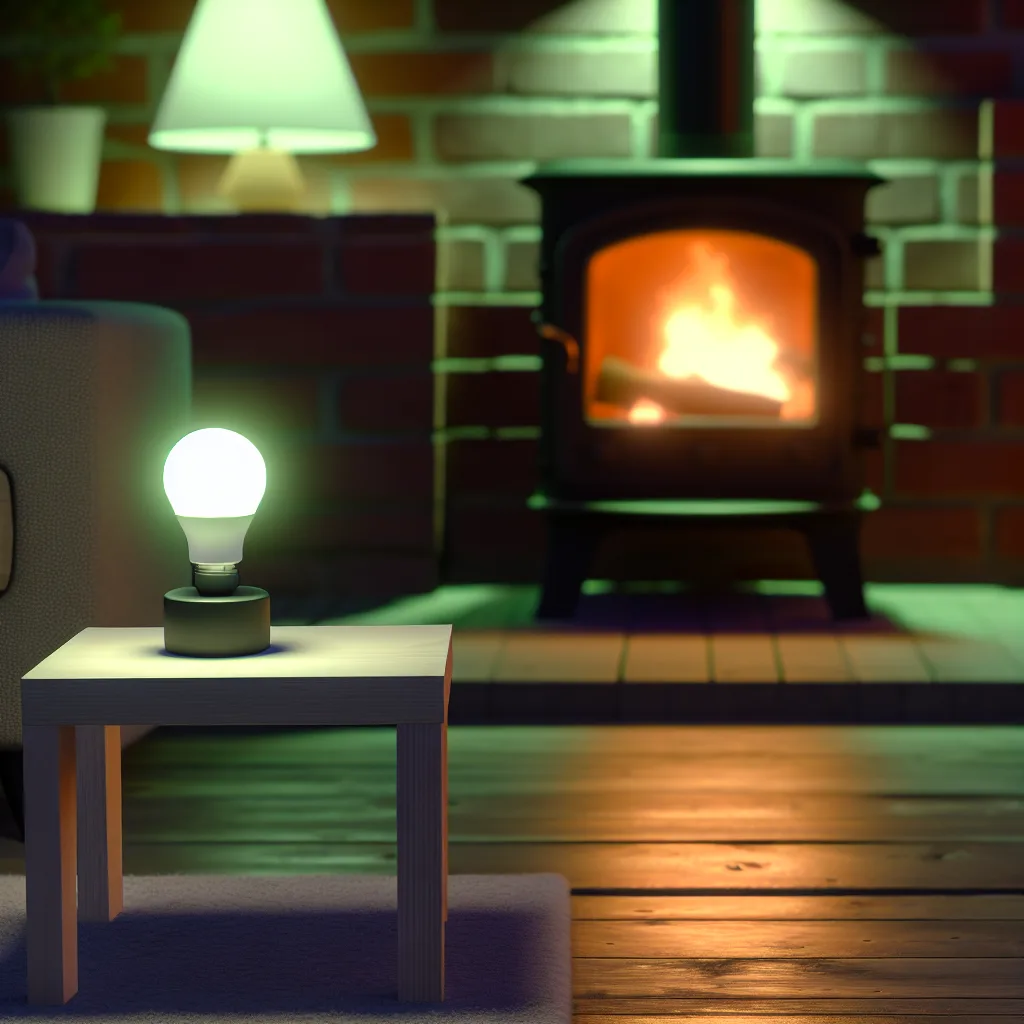Stop Guessing, Start Glowing: How a Simple Smart Light Became My Favorite Wood Stove Thermometer.
I love my wood stove. There’s nothing quite like the heat it puts out on a cold night. But for a long time, I was just guessing. Is it too hot? Too cold? Time to add another log? I’d constantly be checking my phone for updates from the little monitoring system I built. It worked, but it wasn’t elegant. That’s when I landed on a simple idea that completely changed how I interact with my stove: a visual wood stove thermometer.
Last year, I got a bit nerdy and installed a thermocouple in the stove’s flue pipe. I connected it to a small microcontroller (an ESP8266, for the curious) that would track the temperature and send alerts to my phone. It was great for learning how to burn more efficiently. I figured out exactly when to cut back the air supply for a secondary burn and when it was the perfect time to reload. The proof was in the chimney—when I cleaned it last week, there was almost no creosote buildup. Success!
But the phone notifications were a pain, especially in the middle of the night. Waking up, grabbing my phone, squinting at the screen… it felt like the opposite of the cozy, off-grid vibe I was going for. I needed the data, but I wanted it to be ambient. Information I could absorb with just a glance.
Why a Smart Wood Stove Thermometer is Worth It
Before we get to the fun part, let’s talk about why you’d even want to precisely monitor your stove’s temperature. It’s not just about being a data geek. An effective wood stove thermometer system helps with two critical things: efficiency and safety.
- Efficiency: A stove that’s too cool won’t burn the wood completely, leading to smoke and creosote. A stove that’s too hot is just wasting fuel up the chimney. By keeping the flue temperature in that “sweet spot” (for most stoves, that’s between 250°F and 450°F), you get a more complete burn. This means more heat from less wood and a much cleaner chimney.
- Safety: The most obvious risk is an “over-fire” event, where the stove and flue get dangerously hot, creating a fire hazard. My system sends me a critical alert if things ever climb above 800°F, which brings great peace of mind.
My initial setup did all this, but the information was trapped on my phone’s screen.
The Simple “Aha!” Moment: A Smart Light
One evening, I was looking at a lonely Wyze smart bulb in the corner of the room that we barely used. And then it hit me. What if the light was the notification?
Instead of sending a text that says “Stove is at 400°F,” I could map the temperature to a color. It was a beautifully simple idea. I spent an evening tinkering with the code and set up a basic color scale:
- Blue: The stove is cold or just getting started.
- Green: We’re in the ideal burning range. Everything is efficient and happy.
- Red: Things are getting too hot. Time to cut back the air supply.
I didn’t want jarring color changes, so I programmed it to adjust the hue gradually in tiny increments every 30 seconds. The result is a slow, gentle shift from blue to green as the stove heats up, and a fade toward yellow, orange, and then red if it gets too hot.
My New Favorite Visual Wood Stove Thermometer in Action
The first night I used it was fantastic. As the fire got going, the corner of the room shifted from a cool blue to a calming green. Throughout the evening, I could just glance over and know exactly how my fire was doing. No numbers, no graphs, just a simple, intuitive color. When the green started to fade back toward blue, I knew it was time to add another log.
This little project has been one of the most satisfying smart home upgrades I’ve ever done. It’s not flashy, but it’s incredibly practical. It blends technology seamlessly into the background of our home, providing useful information without demanding attention.
If you’re a fellow wood stove owner and a bit of a tinkerer, I can’t recommend this enough. You don’t need to be an expert to get started. The core components are a K-type thermocouple (which is designed for high temperatures) and a simple microcontroller like the ESP8266. From there, you just need a color smart bulb from a brand like Wyze or Philips Hue.
It’s a perfect weekend project that will make your wood stove safer, more efficient, and honestly, just a little more magical.
